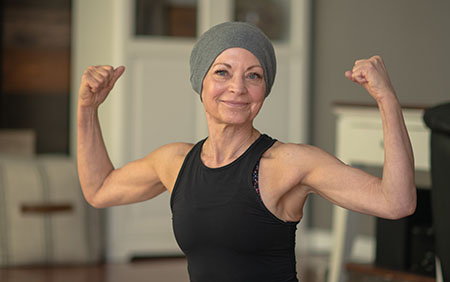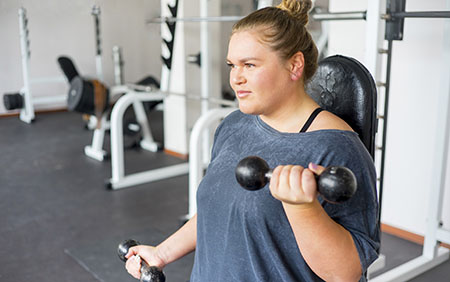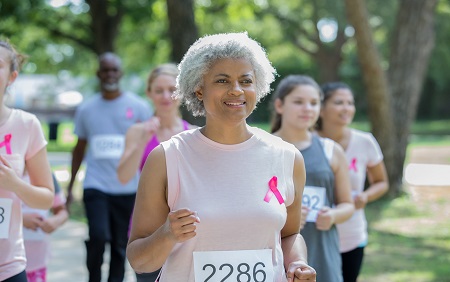Regular Exercise May Reduce Cancer Risk
Hester Hill Schnipper, LICSW, OSW-C Program Manager Emeritus, Oncology, Social Work
AUGUST 27, 2021
 We have all been told, over and over and over, about the importance of regular mild to moderate exercise. Nothing is a magic bullet, but exercise seems to be as close as we can get. We know that, cancer aside, exercise improves our health, manages our weight, helps us sleep, and relieves stress and anxiety. With cancer in the equation, we also know that studies suggest it can reduce the risk of development or recurrence in some kinds of cancer. We also know that regular mild to moderate exercise can help people better manage active cancer treatment. Even taking daily walks around the block increases energy, improves mood, and can help with GI and other side effects from chemotherapy.
We have all been told, over and over and over, about the importance of regular mild to moderate exercise. Nothing is a magic bullet, but exercise seems to be as close as we can get. We know that, cancer aside, exercise improves our health, manages our weight, helps us sleep, and relieves stress and anxiety. With cancer in the equation, we also know that studies suggest it can reduce the risk of development or recurrence in some kinds of cancer. We also know that regular mild to moderate exercise can help people better manage active cancer treatment. Even taking daily walks around the block increases energy, improves mood, and can help with GI and other side effects from chemotherapy.
Studies have found that higher levels of physical activity are linked to lower risk of these cancers: bladder, breast, colon, endometrial, esophageal, kidney, and gastric or stomach cancer. There is some evidence it may also reduce the risk of lung cancer. There is more limited evidence of an association with certain blood cancers, as well as pancreatic, prostate, ovarian, thyroid, liver and rectal cancers.
Note that all these studies are considering an association between exercise and development of cancer. There has been less work around a reduction of recurrence risk for people who have already been diagnosed and treated for cancer. There is some data to suggest exercise can lower the recurrence rate for breast, prostate and colorectal cancers. It should be noted that there may well be other contributing factors for these results. People who regularly exercise are likely to be people who generally have healthy lifestyle habits; they may not smoke, use less alcohol, eat diets that are heavy in fruits, whole grains and vegetables, etc. This all means that we, unfortunately, can’t draw a straight line between daily exercise and never having a cancer recurrence.
Even with these facts, it can be tough to motivate ourselves to lace on the sneakers and start moving. It is reported that about one third of cancer survivors do no regular exercise. It is likely that many or most of these people didn’t exercise before cancer, so it isn’t shocking that their habits have not changed. The rest of us, however, can be encouraged to exercise with the certainty that we are supporting our general health and mood, and that we may be helping to keep the cancer away.
Physical activity is defined as any movement that uses our skeletal muscles and requires more energy than sitting on the couch. It definitely does not need to mean sprints, training for a marathon or heavy lifting. It includes walking, dancing, gardening, household chores and sports. It does not have to be done for a solid half hour or longer each day; the same benefits accrue from shorter times. That means you can walk your dog for ten minutes and garden or vacuum later in the day and feel that you have met your goal.
Before beginning a new exercise program, it is always wise to check with your doctor. Especially if you are still recovering from surgery or radiation therapy, there may be restrictions on movement or intensity of activities. For anyone going through or healing from cancer treatment, the usual adage of no pain, no gain does not apply. We need to listen to our bodies, make reasonable choices and not push ourselves to exhaustion. Recovery takes time, but mild to moderate exercise will speed the pace.
Here are the commonly suggested guidelines:
- Add moderate physical activity (exercise) for at least 150 minutes per week. Spread it out.
- If you are trying to lose weight, you will need to exercise more, perhaps an hour a day. Again, you can spread it out through the day. Exercise after cancer is not really about weight, but about maintaining optimal health.
- Start slowly and don’t try to do it all at once.



